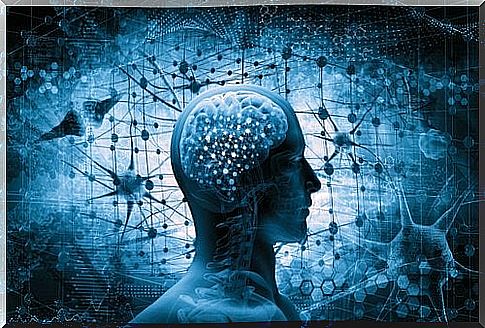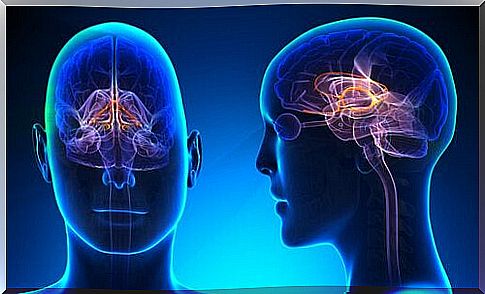How The Brain Works In Critical Situations

The brain’s responses in critical situations are different from what we might be used to. It doesn’t work in exactly the same way it does in everyday life. Critical situations activate a fast-response neural system that triggers a series of behaviors and hormone release.
This mechanism is aimed at survival. This functioning is natural to the human body, it is something innate and is different from what we use consciously.
That is, our brain is in charge of supervising everything we do, ensuring that the processes are successful. It is the organ that has the greatest responsibility for the dynamics of our bodily functions and behaviors. In many circumstances, our brain works in a conscious and procedural way, that is, putting into operation functions that have already been learned, such as speaking and walking.
This way of functioning, however, is not the only one available in our brain. In critical situations, in which we detect a risk or threat to life, the brain works based on other neural networks, in charge of setting in motion the system responsible for survival. Our brains are prepared to make decisions immediately in cases where we identify an imminent danger.
In this sense, we have a set of neural networks designed to work as an alarm system, and this system is in charge of making decisions in critical situations. This alarm system, however, is not perfect, and on many occasions it can lead to wrong or ineffective decisions.
For this reason, next we will see how the brain works in critical situations and what consequences the activation of the alarm and survival system can have for us.
Cerebral limbic system: the brain’s alarm system
The human brain has a neuronal system in charge of emotional processing and responses related to fear and anxiety. We’re talking about the limbic system, located in the inner part of the brain’s temporal lobe.
It is in the limbic system that there is a structure that is specifically dedicated to detecting and processing danger signals: the cerebral amygdala. The amygdala is connected with different brain areas and has the ability to activate fast and intense behaviors.
Virtually all species of mammals have an innate reaction of flight, fight or paralysis to dangerous stimuli, and this reaction is triggered precisely by the action of the amygdala. The alarm reaction can be activated consciously, when we realize that there is a serious danger, or unconsciously through brain shortcuts.
In other words, the possibility exists that, before we consciously realize it, our brain activates the survival system and the amygdala triggers different responses to what is happening.

Brain responses in critical situations
First, the action of the brain in critical situations can lead to an order to escape, and this order will not be consciously analyzed. That is, our brain won’t ask us if we believe it’s really okay to run away, or if we could stay in the situation.
Therefore, the response in moments of danger can even make the situation worse, because we make decisions based on reflexes, without stopping to reflect on the possibilities or the consequences.
The function of running away is simply to get us out of harm’s way to seek refuge and help, and in a critical situation it can actually lead us to escape from danger. This can happen, however, so that we will not have time to reflect on whether to face the situation, and so we will never choose that option.
It could put us in yet another danger. An example would be if we go into escape mode and cross a street without looking at traffic, so we run the risk of being run over.
Another possible answer is to fight. This would be the response in which a subject gives everything for his life in an attempt to eliminate a dangerous stimulus. When the sympathetic system is activated, this fighting response rises noticeably, increasing blood adrenaline levels and generating an acute stress response.
This response makes the muscles more resistant, the skin less sensitive, and increases the lungs’ ability to breathe for a certain amount of time. All of this translates into greater endurance and strength.
Thirdly, another response may be paralysis or bewilderment. That is, we lose the ability to react, aiming to hide and not react. Paralysis as a response seeks the attempt to make the threat pass without noticing our presence.
At the same time, it is very important to keep in mind that if this response is produced, the person will not be able to activate his motor system, the muscular movement system, and thus will be immobile.
The brain in critical situations, therefore, has a survival system that is activated ultra-fast and unconsciously, in milliseconds, and can cause us to give an incorrect response for the specific situation. In fact, the alarm response often increases the danger, and that is why there is a whole group of professions in charge of training people to know how to act in the face of emergencies.
Consequences of activating the alarm and survival system
The most immediate consequence of going through a critical situation, once it is over, is physical and emotional exhaustion. This extreme tiredness is a result of the weariness of going through a dangerous situation, or a very delicate situation. Tiredness can last for more than a day, and even persist even after sleeping and resting.
This is because all of our neuronal and physical resources are destined to try to survive, even if there is actually no danger to life. The goal is to overcome the situation, and on the priority list, recovering lost energy comes last, or after overcoming the situation.

Another possible consequence, in addition to exhaustion, is the imprint that the critical situation leaves in our memory. This is because the amygdala and the hippocampus – the brain structure responsible for fixing new learning and creating memories – work together.
In this way, the amygdala activates the hippocampus so intensely that it makes the memory stick too tightly. For this reason, critical situations tend to be remembered for a lifetime, and with a fair amount of detail. The technical name of emotions strengthening a memory is somatic marker.
Another possible consequence of brain activation in critical situations may be Post Traumatic Stress Disorder (PTSD). This condition develops when the level of physical activation is extremely high, and the main emotion associated with it is intense fear. However, we will not necessarily develop PTSD when experiencing a traumatic situation.
On the other hand, this disorder requires treatment by specialized psychological therapy, as it is characterized by the existence of flashbacks of what happened, moments of great sadness and the perception of a constant threat in our closest environment, whatever it may be.
Finally, it is important to remember that the brain can learn to respond in a more adapted way to critical or dangerous situations. Training, emergency action protocols, and self-defense strategies are elements that can help us improve our innate survival response.









